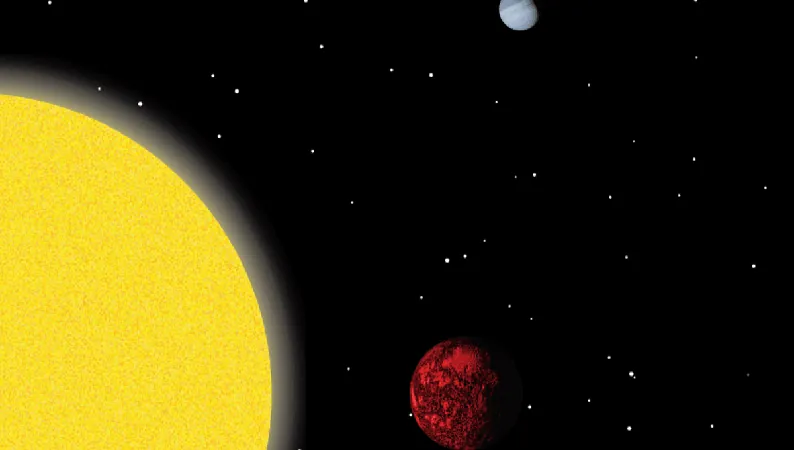
Record-Breaking Planet K2-360 b: The Densest Ultra-Short Period Planet Found 750 Light-Years Away!
2024-11-18
Author: Charlotte
Introduction
Astronomers have made a groundbreaking discovery by identifying the densest ultra-short period planet ever recorded, located an astonishing 750 light-years from Earth in the K2-360 star system. This international research team has unveiled that this unique planet, known as K2-360 b, orbits a Sun-like star in a mere 21 hours, making it one of the fastest orbiters discovered to date.
Characteristics of K2-360 b
K2-360 b is classified as a super-Earth—a rocky planet that is larger than our own Earth. With a radius nearly 1.6 times that of Earth, its volume is about four times larger. Surprisingly, this massive planet boasts a staggering mass of 7.7 times that of our planet, which translates to a density that is almost double that of Earth, comparable to that of lead. John Livingston, a lead researcher from the Astrobiology Center in Tokyo, highlights the planet's incredible density, stating, “K2-360 b is truly remarkable—it packs nearly eight Earth masses into a ball only slightly larger than our planet.”
Formation and Evolution
One might wonder how this dense world came to be. K2-360 b is believed to have a surface covered in molten rock, maintained by its intense proximity to its host star. Researchers theorize that the planet may have originally possessed a thick gaseous atmosphere similar to that of Uranus or Neptune. Over time, however, it likely migrated inward towards the star, which eroded its atmosphere and left behind a rocky surface.
Insights from K2-360 b
In addition to its mesmerizing characteristics, K2-360 b’s unique evolution might offer insights into the fate of similar close-in planets. Co-author Davide Gandolfi from the University of Turin notes, “This planet gives us a glimpse into the possible fate of some close-in worlds, where only the dense, rocky cores remain after billions of years of evolution.”
K2-360 c: Another Planet in the System
Interestingly, K2-360 is home to another planet, K2-360 c, which presents its own set of mysteries. Unlike K2-360 b, K2-360 c does not cross in front of the star relative to our position, suggesting a skewed orbital arrangement. It is significantly larger, estimated to be 15 times more massive than Earth, and completes an orbit every 9.8 days. Some scientists speculate that K2-360 c's gravitational pull may have played a pivotal role in altering the orbit of its smaller companion. Co-author Alessandro Trani from the Niels Bohr Institute explains, “Our dynamical models indicate that K2-360 c could have pushed the inner planet into its current tight orbit.”
Composition of K2-360 b
To explain the astonishing density of K2-360 b, researchers propose that it is constructed of a substantial iron core—believed to comprise about 48 percent of the planet's total mass. This could mean that there is roughly the equivalent of four Earth’s mass in iron nestled within its core.
Conclusion
The study of K2-360 b not only expands our understanding of rocky exoplanets but also provides crucial clues about how such planets form and evolve under various conditions throughout the universe. The findings are a testament to the ever-expanding knowledge of our cosmos and the mysteries that continue to await discovery.
*Stay tuned as scientists dive deeper into the enigmatic details of K2-360 b, and what secrets this heavy heavyweight might reveal about our galaxy and beyond!*









 Brasil (PT)
Brasil (PT)
 Canada (EN)
Canada (EN)
 Chile (ES)
Chile (ES)
 España (ES)
España (ES)
 France (FR)
France (FR)
 Hong Kong (EN)
Hong Kong (EN)
 Italia (IT)
Italia (IT)
 日本 (JA)
日本 (JA)
 Magyarország (HU)
Magyarország (HU)
 Norge (NO)
Norge (NO)
 Polska (PL)
Polska (PL)
 Schweiz (DE)
Schweiz (DE)
 Singapore (EN)
Singapore (EN)
 Sverige (SV)
Sverige (SV)
 Suomi (FI)
Suomi (FI)
 Türkiye (TR)
Türkiye (TR)